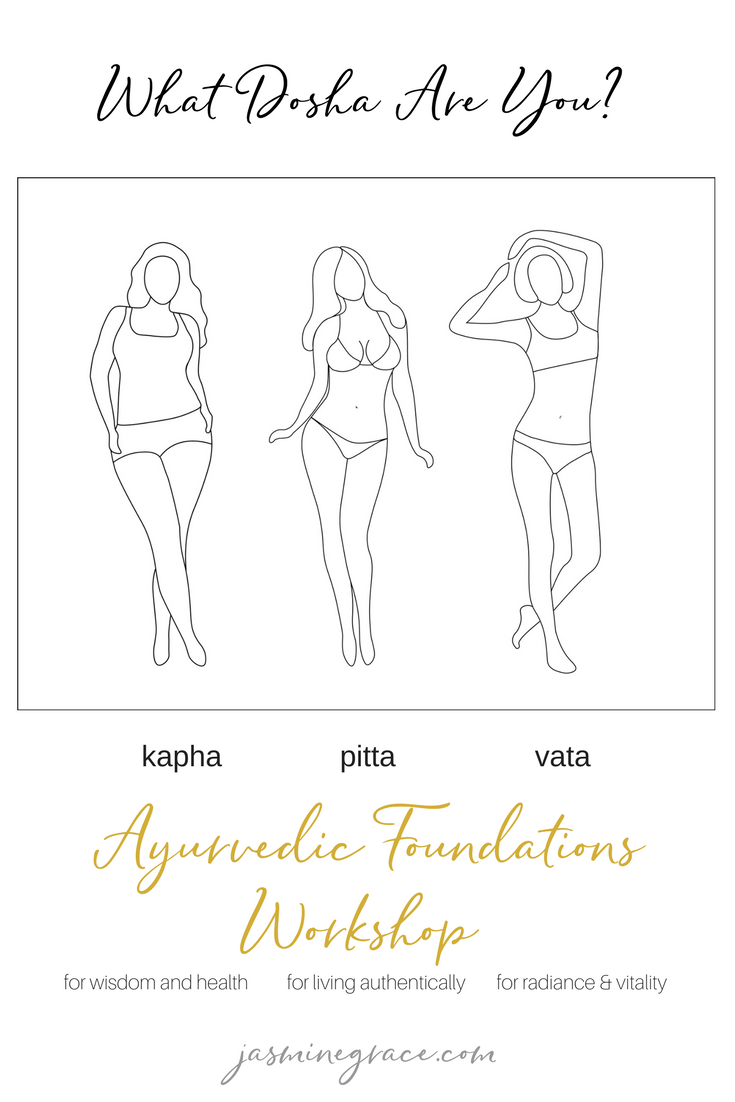
Ayurveda means the science or wisdom of life and is the sister science to Yoga. Ayurveda is a Sanskrit term, made up of two words ”ayu” and “veda”.
- Ayu = Life
- Veda = Science, Wisdom, Knowledge
It is one of the most ancient and comprehensive sciences in the world and has its origins in the Vedas, said to be the oldest and richest text of wisdom on spiritual knowledge on the planet. Ayurveda comes from the Atharva-veda and originated in India five-six thousand years ago.
Ayurveda is a science for the mind, body and spirit and provides practical tools for wellness. It is a holistic and consciousness-based approach to health that brings harmony and balance to all areas of life. It is wisdom that helps us understand the universal laws of nature and looks at our essential being as energetic. It also considers the fact that the relationship between the human being and the universe is intrinsic and cannot be separated. Ayurveda emphasizes balance and harmony with help from nature itself. This dynamic balance needs to be achieved in all aspects of a person’s life: physical, biochemical, intellectual, emotional, behavioral, spiritual, familial, social, environmental and universal. Ayurveda considers the multi-dimensional nature of the body, mind and spirit and places emphasis on disease prevention with the help of diet, daily routines, seasonal consideration, elemental and planetary connection.
Ayurveda believes that the universe is made up of the five elements: earth, water, fire, air and ether. These elements are building blocks for the universe as well as for humans. From the combination of these elements, three “doshas” or energies: Vata, Pitta and Kapha are originated. In addition to the five elements Ayurveda uses “gunas” or qualities to describe the elements and various phenomena throughout the natural world.
Ayurveda relies on 20 qualities known as the Gunas – organized into 10 pairs of opposites.
| Reducing, Lightening, Catabolic Gunas | Building, Nourishing, Anabolic Gunas |
| Light | Heavy |
| Sharp | Dull |
| Hot | Cold |
| Dry | Oily, Moist |
| Rough | Smooth |
| Liquid | Dense |
| Hard | Soft |
| Mobile | Stable |
| Subtle | Gross |
| Clear | Cloudy |
One of Ayurveda’s foundational principles is that like increases like and that opposites bring balance. Therefore, identifying the qualities involved in an imbalance or dis-ease can help to direct an appropriate application of an opposite quality to return the body, mind or spirit back to balance or back to its original state of wellness and wholeness.
The five elements are forces behind all the physical processes in our own body, mind and spirit. Ayurveda teaches us that the whole world, from the largest mountain to the tiniest atom in our body is composed of the five essential elements. Through these elements we have a foundation to relate ourselves as a natural and unique expression of nature itself. Through observation of the elemental qualities we are then able to return balance through applying the opposite elemental quality.
Panchamahabhutas - Five Great Elements
| Ether (Space, connectednes) | Air (Motion) | Fire (Heat, transformation) | Water (Flow) | Earth (Solidity) |
| Light | Mobile | Hot | Moist | Heavy |
| Dry | Light | Light | Heavy | Dry |
| Cold | Cold | Dry | Cold | Cold |
| Unstable | Dry | Unstable | Stable | Very stable |
| Subtle | Rough | Sharp | Soft |
Hard |
The Doshas
When the Panchamahabhutas (5 elements) combine they give rise to the doshas. These three doshas; Vata, Pitta and Kapha, are found in our body. They are responsible for all biological and physiological functions and are present in all of us.
| Dosha | Elements | Action | Qualities (Gunas) |
| Vata | Air + Ether | MOTION - The energy of action, transportation, impulses, circulation, respiration, elimination and movement | Dry, rough, cold, subtle and mobile |
| Pitta | Fire + Water | METABOLISM - The energy of transformation, conversion, temperature, heat, chemical reactions and digestion | Oily, sharp, hot, light, moving, liquid, acidic smell |
| Kapha | Water + Earth | STRUCTURE - The energy of construction, lubrication, protection, growth and nourishment | Moist, cold, heavy, dull, soft, sticky and static |

